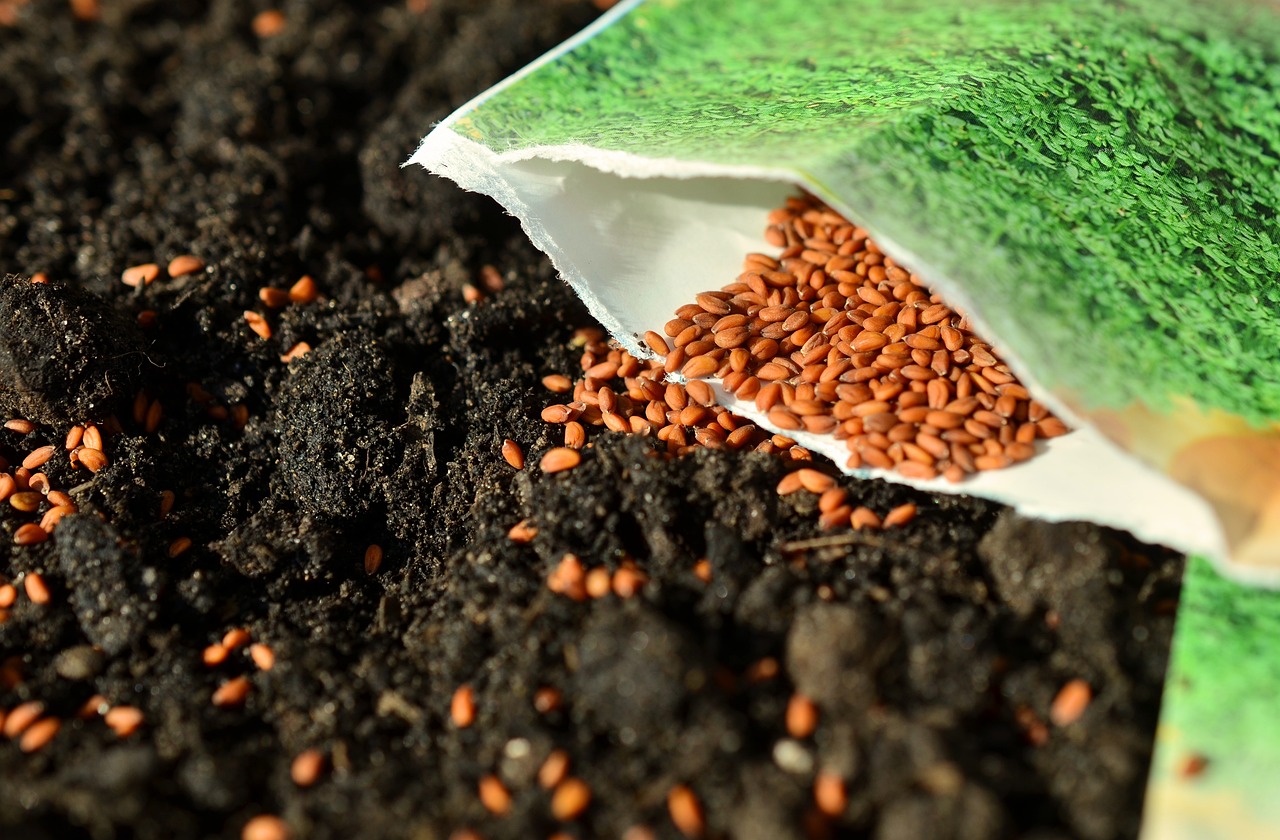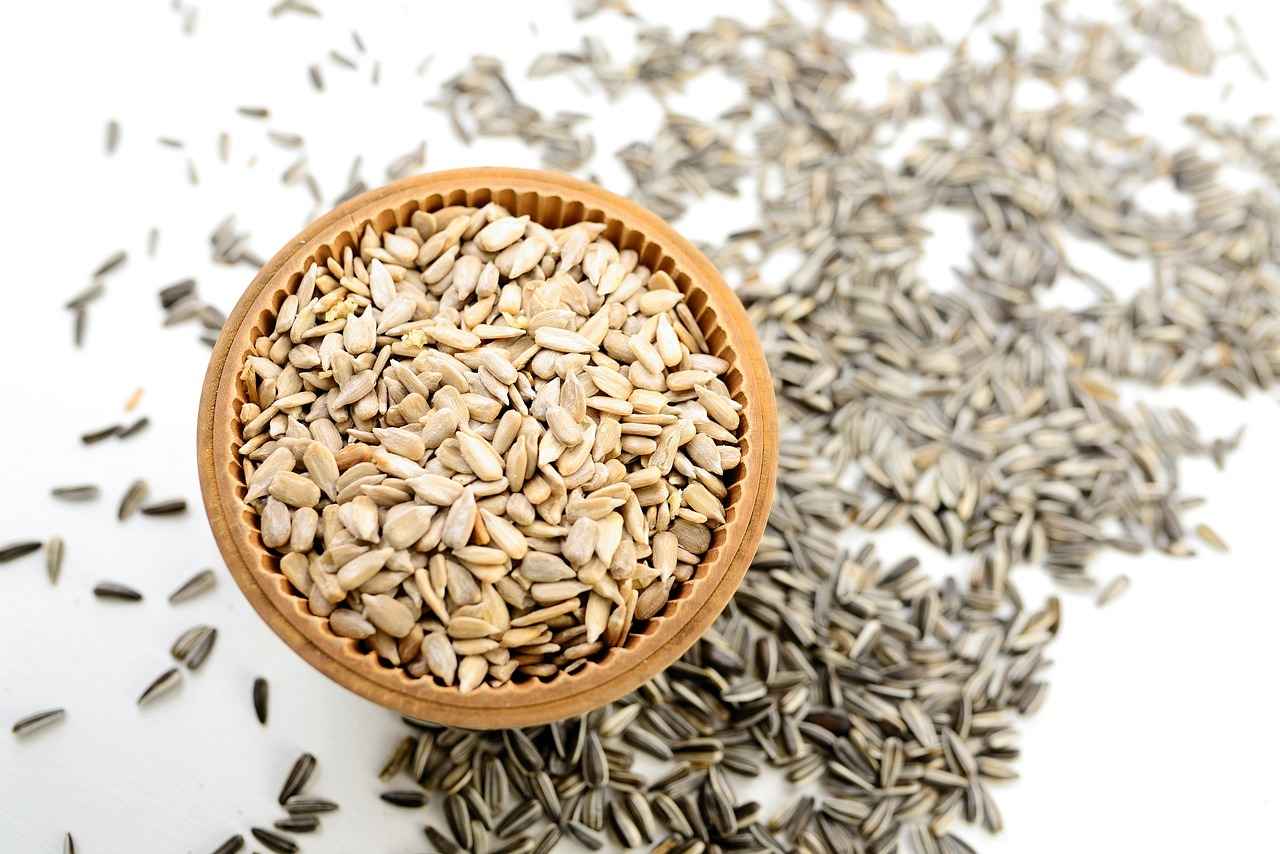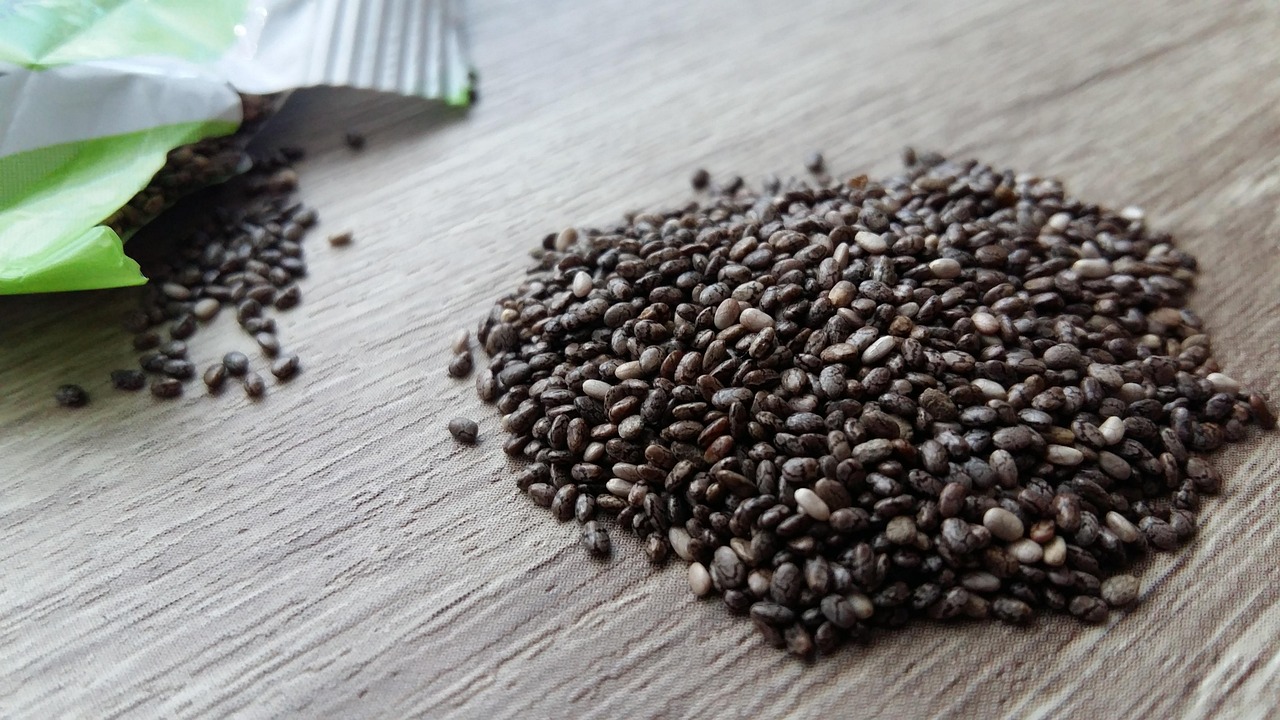Walmart has recently announced a recall of certain batches of chia seeds due to potential contamination with salmonella. This recall is critical for consumer safety, as salmonella can lead to serious health issues. In this article, we will explore the details of the recall, the risks associated with salmonella, and what consumers should do to protect themselves.
The recall was triggered after routine quality control testing detected the presence of salmonella in specific lots of chia seeds. This finding raised immediate concerns regarding public health, prompting Walmart to act swiftly to remove the affected products from shelves.
Salmonella is a bacterium that can cause severe gastrointestinal illness. The risk is particularly high for vulnerable populations, including the elderly, young children, and individuals with compromised immune systems. Symptoms can range from mild to severe, making it essential for consumers to be aware of the risks.
Common symptoms of a salmonella infection include:
- Diarrhea
- Fever
- Abdominal cramps
These symptoms typically manifest within 6 hours to 6 days after exposure to the bacteria. If you experience any of these symptoms, it is crucial to monitor your condition closely.
If symptoms persist for more than 24 hours, or if you experience severe dehydration or high fever, it is vital to seek medical attention immediately. Early intervention can prevent more serious health complications.
Certain groups are at a greater risk of severe illness from salmonella, including:
- The elderly
- Young children
- Individuals with weakened immune systems
These populations should be particularly cautious and avoid consuming any potentially contaminated products.
Consumers are advised to check their pantries for any chia seeds that may be affected by the recall. If you find any recalled products, dispose of them safely and do not consume them to mitigate health risks.
To identify the recalled chia seeds, check for specific lot numbers and expiration dates provided by Walmart. This information is crucial in determining whether your product is part of the recall.
Walmart and the FDA are providing detailed information about the recall, including the specific lot numbers and packaging of the affected chia seeds. You can visit their official websites for the most up-to-date information.
If you are looking for alternatives to chia seeds, consider incorporating flaxseeds or hemp seeds into your diet. These options provide similar nutritional benefits without the associated risks of contamination.
Walmart is implementing enhanced testing and quality control protocols to ensure the safety of its products moving forward. These measures are designed to prevent future occurrences of contamination and protect consumer health.
Staying informed about food recalls is essential for consumer safety. Subscribing to safety alerts from the FDA or following Walmart’s official channels can help you stay updated on any future recalls or safety concerns.
Various resources are available for consumers seeking information on food safety and recalls. The CDC and local health departments provide valuable insights and updates that can help you make informed decisions about your food choices.

What Led to the Walmart Chia Seeds Recall?
The recent recall of chia seeds by Walmart has raised significant concerns among consumers regarding food safety. This recall was prompted by routine testing that detected the presence of salmonella in certain batches of chia seeds. The implications of this contamination are serious, as salmonella can pose a significant health risk to individuals who consume contaminated products.
The recall was initiated after routine testing revealed the presence of salmonella in certain batches of chia seeds, posing a significant health risk to consumers. This action reflects Walmart’s commitment to consumer safety and highlights the importance of regular quality checks in food production. The identification of salmonella is particularly alarming, as it can lead to severe health issues if ingested.
Salmonella infections can lead to severe gastrointestinal illness, especially in vulnerable populations such as the elderly, young children, and those with weakened immune systems. The Centers for Disease Control and Prevention (CDC) estimates that salmonella causes about 1.35 million infections each year in the United States, leading to approximately 26,500 hospitalizations and 420 deaths. This statistic underscores the serious nature of the contamination risk associated with the recalled chia seeds.
Common symptoms of salmonella infection include diarrhea, fever, and abdominal cramps, typically appearing 6 hours to 6 days after exposure. It is essential for consumers to be vigilant and monitor their health if they suspect they have consumed the affected chia seeds.
If symptoms persist for more than 24 hours or if severe dehydration occurs, it is crucial to seek medical help immediately. Vulnerable populations should be particularly cautious and consult a healthcare provider at the onset of symptoms to prevent complications.
Individuals with compromised immune systems, the elderly, and young children are particularly susceptible to severe effects from salmonella infections. These groups should take extra precautions when consuming food products, especially those that have been recalled.
Consumers are advised to check their pantry for the recalled chia seeds and dispose of them safely to prevent any health risks. It is essential to follow the disposal guidelines provided by Walmart and local health authorities to ensure safe handling of contaminated products.
Identifying recalled chia seeds is essential; they typically have specific lot numbers and expiration dates that consumers should be aware of. Walmart has provided detailed information regarding the specific batches that are affected, making it easier for consumers to determine if their product is included in the recall.
Walmart and the FDA provide detailed information regarding the specific lot numbers and packaging of the recalled chia seeds. Consumers can visit the official Walmart website or the FDA’s food recall page for the most current updates and safety information.
If you are looking for alternatives, consider flaxseeds or hemp seeds, which offer similar nutritional benefits without the associated recall risks. These alternatives can be easily incorporated into your diet and provide a good source of omega-3 fatty acids and fiber.
Walmart is taking proactive measures to ensure the safety of its products, including enhanced testing and quality control protocols for chia seeds. The company is committed to maintaining high standards and preventing future contamination incidents.
Staying informed about food recalls is vital; subscribing to safety alerts from the FDA or following Walmart’s official channels can help keep you updated. Consumers should regularly check for updates to ensure they are aware of any potential risks.
Various resources, including the CDC and local health departments, provide valuable information on food safety and recall updates for consumers. Utilizing these resources can help individuals make informed decisions about their food choices and stay safe.

How Serious is the Salmonella Risk?
Understanding the risks associated with Salmonella infections is crucial, especially in light of recent food safety concerns. Salmonella is a type of bacteria that can cause serious gastrointestinal illness. The severity of this illness varies, but it can be particularly dangerous for certain groups of people.
Salmonella infections can lead to severe gastrointestinal illness, especially in vulnerable populations such as the elderly, young children, and those with weakened immune systems. These groups are at a higher risk of developing serious complications from infections, which can include:
- Severe Dehydration: Caused by persistent diarrhea and vomiting, dehydration can lead to hospitalization.
- Sepsis: In severe cases, the infection can enter the bloodstream, leading to sepsis, a life-threatening condition.
- Reactive Arthritis: Some individuals may develop joint pain and inflammation following a Salmonella infection.
According to the Centers for Disease Control and Prevention (CDC), approximately 1.35 million infections occur in the United States each year, resulting in about 26,500 hospitalizations and 420 deaths. This data highlights the importance of understanding and mitigating the risks associated with Salmonella.
As noted earlier, certain populations are more susceptible to the adverse effects of Salmonella infections. These include:
- The Elderly: Age-related declines in immune function make older adults more vulnerable.
- Young Children: Their immune systems are still developing, making them at risk for severe illness.
- Individuals with Weakened Immune Systems: Conditions such as HIV/AIDS, cancer, and diabetes can compromise the body’s ability to fight infections.
In these vulnerable groups, even a mild case of Salmonella can escalate quickly, leading to severe health complications. It is essential for caregivers and family members to be vigilant about food safety practices to protect these individuals.
Symptoms of a Salmonella infection typically manifest within 6 hours to 6 days after exposure and can include:
- Diarrhea: Often severe and can be accompanied by blood.
- Fever: A common response to infection, indicating the body is fighting off the bacteria.
- Abdominal Cramps: These can be quite intense and may last several days.
Recognizing these symptoms early can be crucial in seeking timely medical attention, especially for those at higher risk.
If you or someone you know experiences persistent symptoms, such as diarrhea lasting more than 24 hours or signs of severe dehydration (dry mouth, excessive thirst, little or no urination), it is important to seek medical help immediately. Early intervention can prevent complications and ensure proper treatment.
To minimize the risk of Salmonella infections, follow these essential food safety tips:
- Wash Hands: Always wash your hands with soap and water before handling food.
- Cook Thoroughly: Ensure all meats are cooked to the recommended temperatures to kill harmful bacteria.
- Avoid Cross-Contamination: Use separate cutting boards for raw meats and vegetables.
By understanding the seriousness of Salmonella risks and implementing preventive measures, individuals, especially those in vulnerable populations, can significantly reduce their chances of infection.
What Symptoms Should You Watch For?
When it comes to foodborne illnesses, salmonella is one of the most common culprits, causing significant health concerns worldwide. Understanding the symptoms associated with salmonella infection is crucial for early detection and treatment. This article delves into the various symptoms you should watch for if you suspect you have been exposed to this bacterium.
Salmonella infections typically manifest in a range of symptoms that can vary in severity from person to person. The most frequently reported symptoms include:
- Diarrhea: This is often the most noticeable symptom, which can be severe and may last for several days.
- Fever: Many individuals experience a moderate to high fever, which is the body’s natural response to infection.
- Abdominal Cramps: Painful cramps in the abdomen can occur, making it uncomfortable to perform daily activities.
- Nausea: Some individuals may also experience nausea, which can lead to vomiting in certain cases.
- Headache: A general feeling of malaise and headache may accompany other symptoms.
The onset of symptoms typically occurs between 6 hours to 6 days after exposure to the bacteria. This variability can depend on several factors, including the individual’s health and the amount of bacteria ingested. It’s essential to monitor your health closely during this period, especially if you have consumed food items that may be contaminated.
While anyone can contract a salmonella infection, certain populations are at a higher risk for severe symptoms. These include:
- The Elderly: Older adults often have weakened immune systems, making them more susceptible to severe illness.
- Young Children: Their developing immune systems may not handle infections as effectively as adults.
- Individuals with Compromised Immune Systems: Those with chronic illnesses or undergoing treatments that weaken the immune response are particularly vulnerable.
If you or someone you know exhibits symptoms of salmonella infection, it is crucial to seek medical attention if:
- Symptoms persist for more than 24 hours.
- Severe dehydration occurs, characterized by extreme thirst, dry mouth, or reduced urination.
- There is a high fever (over 102°F) or blood in the stool.
Prompt medical intervention can significantly reduce the risk of complications associated with salmonella infections.
Preventing salmonella infections largely depends on proper food handling and hygiene practices. Here are some effective strategies:
- Wash Hands: Always wash your hands thoroughly with soap and water before and after handling food.
- Cook Food Thoroughly: Ensure that all meats and eggs are cooked to the appropriate temperatures to kill harmful bacteria.
- Avoid Cross-Contamination: Use separate cutting boards for raw meats and vegetables to prevent the spread of bacteria.
- Store Food Properly: Keep perishable items refrigerated and consume them before their expiration dates.
By staying informed and practicing good hygiene, you can significantly reduce your risk of salmonella infection and protect your health.
When Should You Seek Medical Attention?
If you experience symptoms of salmonella infection, it is essential to monitor your condition closely. Salmonella can lead to serious health complications, especially for vulnerable populations. Understanding when to seek medical attention can significantly impact your recovery.
Common symptoms of a salmonella infection include:
- Diarrhea – This can range from mild to severe and may be accompanied by blood.
- Fever – A high fever can indicate a more severe infection.
- Abdominal cramps – These cramps can be intense and debilitating.
- Nausea and vomiting – These symptoms may accompany diarrhea and fever.
Symptoms typically manifest within 6 hours to 6 days after exposure to the bacteria. If you notice these symptoms, it’s crucial to assess their severity and duration.
It is crucial to seek medical help under the following circumstances:
- If symptoms persist for more than 24 hours, it is advisable to consult a healthcare professional.
- Severe dehydration occurs, which can be indicated by symptoms such as extreme thirst, dry mouth, little or no urination, and dizziness.
- If you experience a high fever (over 102°F or 39°C), it is essential to seek medical assistance.
- For individuals with compromised immune systems, the elderly, or young children, it is advisable to seek medical attention sooner, even if symptoms are mild.
Severe dehydration is a serious concern that can arise from prolonged diarrhea and vomiting. Symptoms of dehydration include:
- Dry mouth and skin
- Rapid heartbeat
- Confusion or irritability
- Weakness or fatigue
If you or someone you know is exhibiting these symptoms, it is vital to seek medical attention immediately. Dehydration can lead to more severe health issues if not treated promptly.
When you seek medical attention, healthcare providers will likely conduct a thorough evaluation, which may include:
- A physical examination to assess hydration levels and overall health.
- Laboratory tests to confirm the presence of salmonella.
- Recommendations for treatment, which may include rehydration solutions, medications to manage symptoms, or hospitalization in severe cases.
To reduce the risk of salmonella infection, consider the following preventive measures:
- Practice good hygiene, including frequent handwashing.
- Cook foods to safe temperatures and avoid cross-contamination.
- Stay informed about food recalls and safety alerts.
By being vigilant and informed, you can significantly reduce your risk of salmonella infection and its associated health risks.
Who is Most at Risk?
Understanding the risks associated with salmonella infections is crucial, especially for certain groups of people who may face more severe consequences. The elderly, young children, and individuals with compromised immune systems are particularly vulnerable to the effects of this bacteria. This article delves into why these populations are at heightened risk and what precautions can be taken.
The elderly often have weakened immune systems due to age-related changes in their bodies. As a result, they may not be able to fight off infections as effectively as younger individuals. Additionally, many elderly people may have underlying health conditions, such as diabetes or heart disease, that can complicate recovery from infections. It is crucial for caregivers and family members to be vigilant about food safety, particularly when it comes to handling and consuming foods that may harbor salmonella.
Young children, particularly those under the age of five, are also at an increased risk for severe salmonella infections. Their immune systems are still developing, making it harder for them to combat infections. Symptoms in children can escalate quickly, leading to severe dehydration and other complications. Parents should ensure that children wash their hands frequently and avoid consuming raw or undercooked foods that could be contaminated.
People with compromised immune systems, including those undergoing chemotherapy, organ transplant recipients, and individuals living with HIV/AIDS, are at a significant risk for severe salmonella infections. Their bodies may not respond adequately to infections, leading to more serious health issues. It is essential for these individuals to be cautious about food choices and to consult healthcare providers regarding dietary restrictions and safe food handling practices.
Recognizing the symptoms of salmonella infection is vital for prompt treatment. Common symptoms include:
- Diarrhea
- Fever
- Abdominal cramps
Symptoms typically manifest within 6 hours to 6 days after exposure to the bacteria. If you or someone you know is in a high-risk group and exhibits these symptoms, it is important to seek medical attention promptly.
To mitigate the risk of salmonella infections, high-risk groups should adhere to the following safety practices:
- Cook foods thoroughly: Ensure that meats, eggs, and poultry are cooked to safe internal temperatures.
- Avoid raw foods: Steer clear of raw eggs, undercooked meats, and unpasteurized dairy products.
- Practice good hygiene: Wash hands frequently, especially after handling food, and ensure kitchen surfaces are sanitized.
- Stay informed: Keep up with food recalls and safety alerts to avoid consuming potentially contaminated products.
If you belong to a high-risk group and experience symptoms of a salmonella infection, it is crucial to seek medical help. Early intervention can prevent complications and ensure appropriate treatment.
In summary, individuals with compromised immune systems, the elderly, and young children face significant risks from salmonella infections. By understanding these vulnerabilities and taking proactive measures, we can help protect those most at risk. Awareness and education are key components in preventing the severe effects of salmonella.
What Should Consumers Do with Affected Products?
In light of the recent recall of chia seeds by Walmart due to potential salmonella contamination, it is crucial for consumers to take immediate action regarding any affected products. This article outlines comprehensive steps that consumers should follow to ensure their safety and the safety of their families.
Consumers are strongly advised to check their pantry for any chia seeds that may be part of the recall. If you find any recalled products, it is essential to handle them properly to minimize health risks. Here are the steps you should follow:
- Identify the Product: Check the packaging for specific lot numbers and expiration dates that have been identified in the recall notice. This information is crucial in determining if your chia seeds are affected.
- Dispose of the Product Safely: If you confirm that your chia seeds are recalled, dispose of them immediately. Seal the product in a plastic bag before throwing it in the trash to prevent accidental consumption by others or pets.
- Clean the Storage Area: After disposing of the seeds, thoroughly clean the area where they were stored. Use warm soapy water to wipe down shelves and containers to eliminate any potential contamination.
- Monitor for Symptoms: Be vigilant for any signs of salmonella infection, which may include diarrhea, fever, and abdominal cramps. If you experience any of these symptoms, consult a healthcare professional.
Disposing of recalled products safely is essential to prevent any health risks associated with salmonella. Salmonella can survive on surfaces and in food products for extended periods, posing a risk even after the product is removed. By following safe disposal practices, you can help protect yourself and others from potential contamination.
If you or anyone in your household shows symptoms of salmonella infection after consuming the recalled chia seeds, it is critical to seek medical attention promptly. Symptoms can vary in severity and may require hydration and treatment, especially for vulnerable populations such as the elderly or those with weakened immune systems.
To stay informed about future recalls, consider subscribing to safety alerts from the FDA or following Walmart’s official channels. Regularly checking these resources can help you stay ahead of potential health risks associated with food products.
As a consumer, you have the right to safe products. If you have purchased the recalled chia seeds, you may be eligible for a refund or replacement. Keep your receipt and contact Walmart’s customer service for guidance on how to proceed with your claim.
In summary, taking immediate action by checking your pantry, disposing of recalled products safely, and monitoring for symptoms is vital in ensuring your health and safety. By staying informed and proactive, you can help mitigate the risks associated with food recalls.

How Can You Identify Affected Products?
In light of the recent recall of chia seeds by Walmart due to potential salmonella contamination, it is crucial for consumers to know how to identify affected products. This knowledge not only helps in ensuring personal safety but also aids in preventing further health risks associated with contaminated food products.
Identifying recalled chia seeds is essential; these products typically have specific lot numbers and expiration dates that consumers should be aware of. Here are some key points to help you identify whether your chia seeds are part of the recall:
- Check the Packaging: Look for the packaging of the chia seeds you purchased. Recalled products usually have a specific label indicating the lot number and expiration date.
- Lot Numbers: The lot number is crucial for identifying recalled products. It is often printed on the side or bottom of the package. Make sure to compare it with the recall information provided by Walmart or the FDA.
- Expiration Dates: Each package will have an expiration date. If your chia seeds are past this date, it is advisable to dispose of them, even if they are not part of the recall.
- Online Resources: Visit the official websites of Walmart and the FDA for the most current recall information. They provide detailed lists of affected lot numbers and expiration dates.
Additionally, if you have purchased chia seeds from other retailers, it is wise to check their websites as well, as recalls may extend beyond Walmart.
Understanding how to identify recalled products is vital for your health and safety. Salmonella can cause serious health issues, particularly for vulnerable populations such as the elderly, infants, and individuals with weakened immune systems. By being proactive and checking your pantry, you can prevent potential illness.
If you find that your chia seeds are part of the recall, here are the steps you should take:
- Do Not Consume: Avoid eating the chia seeds to eliminate any risk of salmonella infection.
- Dispose of the Product: Safely discard the affected chia seeds to prevent accidental consumption by others.
- Contact the Retailer: Reach out to Walmart or the retailer from whom you purchased the seeds for guidance on returns or refunds.
Staying informed about food safety is essential. Subscribe to alerts from the FDA and regularly check Walmart’s official channels for updates on recalls. This proactive approach can keep you and your family safe from contaminated food products.
In summary, knowing how to identify recalled chia seeds involves checking for specific lot numbers and expiration dates. By following the guidelines outlined above, you can ensure your safety and make informed decisions regarding your food purchases.
Where Can You Find Recall Information?
In light of the recent chia seed recall by Walmart, it is crucial for consumers to stay informed and vigilant. The recall stems from potential salmonella contamination, which can pose serious health risks. Understanding where to find accurate and timely recall information is essential for consumer safety.
Walmart and the FDA are primary sources for detailed information regarding the recall of chia seeds. Both organizations have taken steps to ensure that consumers are well-informed about the specific lot numbers and packaging associated with the affected products. Here are the key resources you can utilize:
- Walmart’s Official Website: The retailer has a dedicated section for product recalls, which is regularly updated. Consumers can search for the specific chia seed products using lot numbers or product names.
- FDA’s Recalls Page: The FDA provides comprehensive information about food recalls, including detailed reports on the chia seeds in question. This page includes lot numbers, packaging details, and safety recommendations.
- Social Media Updates: Both Walmart and the FDA often use their social media platforms to disseminate recall information quickly. Following these accounts can provide real-time updates.
- Local News Outlets: Local news stations often report on significant food recalls, offering insights and updates that may not be immediately available through official channels.
The information provided by Walmart and the FDA includes:
- Lot Numbers: These are unique identifiers for each batch of chia seeds. Consumers should check their products against the recalled lot numbers to determine if they are affected.
- Packaging Details: The recall notices specify the packaging formats, such as bags or jars, which helps consumers identify the recalled products more easily.
- Expiration Dates: Along with lot numbers, expiration dates are crucial in determining whether a product is part of the recall.
If you discover that you have purchased the recalled chia seeds, it is vital to take immediate action:
- Do Not Consume: Discard the affected products safely to prevent any risk of salmonella infection.
- Report Your Findings: Consider reporting your product to Walmart or the FDA, as this helps in tracking the reach of the recall.
- Stay Informed: Regularly check the Walmart and FDA websites for any updates regarding the recall or further safety information.
Staying updated about food recalls is vital for consumer safety. Salmonella can cause severe health issues, particularly for vulnerable populations. By utilizing the resources provided by Walmart and the FDA, consumers can make informed decisions and protect their health and the health of their families.
In summary, the recent chia seed recall by Walmart highlights the importance of being proactive about food safety. By knowing where to find recall information and understanding the specifics of the recall, consumers can take necessary precautions to avoid health risks associated with contaminated products.
What Are Safe Alternatives to Chia Seeds?
In light of the recent Walmart chia seeds recall due to potential salmonella contamination, many consumers are seeking safe alternatives that provide similar health benefits. Chia seeds have gained popularity for their rich nutritional profile, but with the recall raising concerns, it’s essential to explore other options that can be just as beneficial.
Flaxseeds are an excellent substitute for chia seeds, offering a plethora of health benefits. Rich in omega-3 fatty acids, fiber, and lignans, flaxseeds promote heart health and digestive wellness. They can be easily incorporated into your diet by adding them to smoothies, oatmeal, or baked goods. Additionally, flaxseeds do not carry the same recall risks currently associated with chia seeds, making them a safer choice for health-conscious consumers.
Hemp seeds are another fantastic alternative, known for their high protein content and essential fatty acids. They also contain a balanced ratio of omega-6 to omega-3 fatty acids, which is beneficial for overall health. These seeds can be sprinkled on salads, blended into smoothies, or used as a topping for yogurt. Like flaxseeds, hemp seeds are free from the recent contamination concerns, providing peace of mind for those looking to maintain a healthy diet.
| Nutrient | Chia Seeds | Flaxseeds | Hemp Seeds |
|---|---|---|---|
| Omega-3 Fatty Acids | 5g | 6g | 2.5g |
| Protein | 4g | 5g | 10g |
| Fiber | 11g | 8g | 1g |
- Add flaxseeds to your morning smoothie for a nutrient boost.
- Sprinkle hemp seeds over salads or yogurt for added texture and flavor.
- Use ground flaxseeds as an egg substitute in baking recipes.
- Mix chia seeds into your oatmeal or yogurt for a filling breakfast.
Aside from flaxseeds and hemp seeds, other alternatives include pumpkin seeds and sunflower seeds. Both are nutrient-dense and provide a variety of vitamins and minerals. Pumpkin seeds are particularly high in magnesium, while sunflower seeds are a great source of vitamin E.
When exploring alternatives, it’s crucial to consider personal dietary needs and preferences. Each seed offers unique health benefits, and incorporating a variety can enhance your overall nutrient intake. Always ensure that the seeds you choose are sourced from reputable suppliers to avoid any contamination issues.
In summary, while the recall of chia seeds has raised significant concerns, options like flaxseeds and hemp seeds provide safe, nutritious alternatives without the associated risks. By diversifying your seed intake, you can continue to enjoy the health benefits while ensuring your safety.

What Steps is Walmart Taking to Address the Issue?
Walmart has always prioritized the health and safety of its customers, and in light of recent events surrounding the recall of chia seeds, the company is intensifying its commitment to product safety. This article delves into the proactive measures Walmart is implementing to ensure that its products, particularly chia seeds, are safe for consumption.
In response to the salmonella contamination issues, Walmart is implementing enhanced testing protocols for chia seeds. This involves rigorous testing at multiple stages of the supply chain, from initial sourcing to final packaging. By conducting thorough laboratory tests, Walmart aims to detect any potential contaminants before the products reach the shelves.
Walmart is also enhancing its quality control measures to ensure that all chia seeds meet stringent safety standards. This includes working closely with suppliers to establish better quality assurance processes. Regular audits and inspections will be conducted to guarantee compliance with safety regulations.
To further bolster safety, Walmart is collaborating with its suppliers to develop a more robust safety framework. This partnership focuses on sharing best practices and insights into handling and processing chia seeds. By fostering a culture of safety, Walmart aims to minimize the risk of contamination at the source.
Walmart understands the importance of keeping consumers informed about product safety. The company is launching educational campaigns to raise awareness about safe food handling practices and the importance of checking for recall notices. This initiative empowers customers to make informed choices when purchasing chia seeds and other products.
In the event of a recall, Walmart is committed to providing timely and transparent information to its customers. The company is enhancing its communication channels to ensure that recall notices are easily accessible through its website, social media platforms, and in-store signage. This proactive approach helps customers stay informed about any potential risks associated with their purchases.
Walmart is investing in advanced safety technologies to monitor the quality of its products continuously. This includes the use of blockchain technology to trace the origin of food products, ensuring that any safety issues can be quickly identified and addressed. By leveraging technology, Walmart aims to enhance the overall safety of its supply chain.
Recognizing that certain groups are more susceptible to foodborne illnesses, Walmart is placing a heightened focus on protecting vulnerable populations. This includes seniors, young children, and individuals with compromised immune systems. By tailoring safety measures to these groups, Walmart aims to reduce the risk of severe health consequences.
Walmart is dedicated to a culture of continuous improvement when it comes to food safety. The company is regularly reviewing and updating its safety protocols based on the latest scientific research and industry best practices. This commitment ensures that Walmart remains at the forefront of food safety standards.
In summary, Walmart is taking significant steps to address the recent chia seed recall by enhancing testing protocols, improving quality control, collaborating with suppliers, educating consumers, and investing in technology. These measures reflect Walmart’s unwavering commitment to ensuring the safety of its products and the well-being of its customers.
How Can You Stay Informed About Future Recalls?
Staying informed about food recalls is crucial for ensuring the safety of you and your family. In light of the recent Walmart chia seeds recall due to potential salmonella contamination, it is essential to be proactive in monitoring food safety alerts. Here are some effective strategies to keep yourself updated on future recalls:
The Food and Drug Administration (FDA) offers a subscription service for safety alerts and recall notifications. By signing up, you will receive timely updates directly to your email, ensuring you are always informed about any potential risks associated with food products.
Walmart provides updates on product recalls through its official website and social media platforms. By following these channels, you can access the latest information regarding any recalls, including details about affected products and safety measures.
There are several mobile applications available that specialize in food safety and recall notifications. These apps can send you alerts based on your preferences and location, making it easier to stay informed about recalls relevant to your shopping habits.
Engaging in community forums or social media groups focused on food safety can be beneficial. Members often share information about recent recalls and safety alerts, providing a platform for discussion and awareness.
In addition to the FDA, the United States Department of Agriculture (USDA) also issues recalls, particularly for meat and poultry products. Regularly checking their website can help you stay informed about any food safety issues in these categories.
Understanding food safety practices can empower you to make informed decisions. Familiarize yourself with common symptoms of foodborne illnesses and the proper handling and cooking methods for various food items.
Always inspect product labels for any recall information when shopping. Be vigilant about checking for lot numbers and expiration dates that may be associated with recalls.
Your local health department can be an excellent resource for information on food safety and recalls. They often provide updates on local food safety issues and may have specific recommendations for your area.
By employing these strategies, you can significantly reduce the risk of consuming recalled products and ensure the safety of your food. Staying informed is not just about personal safety; it’s about protecting your loved ones and contributing to a safer community.
What Resources Are Available for Consumers?
In today’s fast-paced world, staying informed about food safety is crucial for consumers. With the increasing number of food recalls, it is essential to know where to find accurate and timely information. Various resources are available that can help you navigate the complexities of food safety and recall updates.
Access to trustworthy information is vital to protect yourself and your family from potential health risks associated with foodborne illnesses. Reliable sources provide updates on recalls, safety tips, and guidelines to ensure that consumers can make informed decisions regarding their food choices.
The Centers for Disease Control and Prevention (CDC) plays a pivotal role in monitoring food safety in the United States. They offer a wealth of information, including:
- Current food recalls and alerts
- Guidelines on safe food handling practices
- Statistics on foodborne illnesses
By visiting the CDC’s website, consumers can access up-to-date information on food safety and learn how to reduce their risk of illness.
Your local health department is another valuable resource for food safety information. They provide:
- Information on local food recalls
- Educational resources on safe food practices
- Access to community health initiatives
Connecting with local health officials can help you stay informed about specific issues affecting your area.
The Food and Drug Administration (FDA) is responsible for ensuring the safety of food products in the U.S. They provide resources such as:
- Detailed information on food recalls
- Guidance on food labeling and safety standards
- Consumer tips for safe food preparation
By regularly checking the FDA’s website, consumers can stay updated on recalls and learn about best practices for food safety.
Many non-profit organizations focus on food safety and consumer advocacy. These groups often provide:
- Educational materials on food safety
- Resources for reporting unsafe food practices
- Updates on legislative changes affecting food safety
Engaging with these organizations can enhance your understanding of food safety issues and empower you to advocate for better practices.
In the digital age, social media platforms and websites offer real-time updates on food recalls. Following reputable accounts and pages can help you stay informed. Look for:
- Official accounts of the CDC, FDA, and local health departments
- Food safety blogs and forums
- Community groups focused on food safety discussions
Social media can be an excellent tool for receiving immediate updates and engaging with other consumers about food safety concerns.
To maximize the benefits of these resources, consider the following tips:
- Regularly check official websites for the latest updates.
- Subscribe to newsletters or alerts from the CDC and FDA.
- Engage with your local health department for community-specific information.
By utilizing these various resources, consumers can significantly enhance their knowledge of food safety and stay informed about recalls, ensuring the health and safety of their families.
Frequently Asked Questions
- What should I do if I have purchased the recalled chia seeds?
If you’ve bought the recalled chia seeds, check the packaging for the lot numbers mentioned in the recall notice. Dispose of the affected products safely to avoid any health risks.
- How can I tell if my chia seeds are part of the recall?
Look for specific lot numbers and expiration dates on the packaging. You can find this information on Walmart’s official website or the FDA’s recall page.
- What are the symptoms of salmonella infection?
Common symptoms include diarrhea, fever, and abdominal cramps. These symptoms typically appear within 6 hours to 6 days after exposure, so keep an eye out!
- Who is most at risk for salmonella infections?
Individuals with compromised immune systems, the elderly, and young children are particularly vulnerable to serious effects from salmonella infections.
- What alternatives can I use instead of chia seeds?
If you’re looking for substitutes, consider flaxseeds or hemp seeds, which provide similar nutritional benefits without the associated recall risks.
- How can I stay updated on future food recalls?
Subscribing to safety alerts from the FDA or following Walmart’s official channels can help you stay informed about any future recalls.












